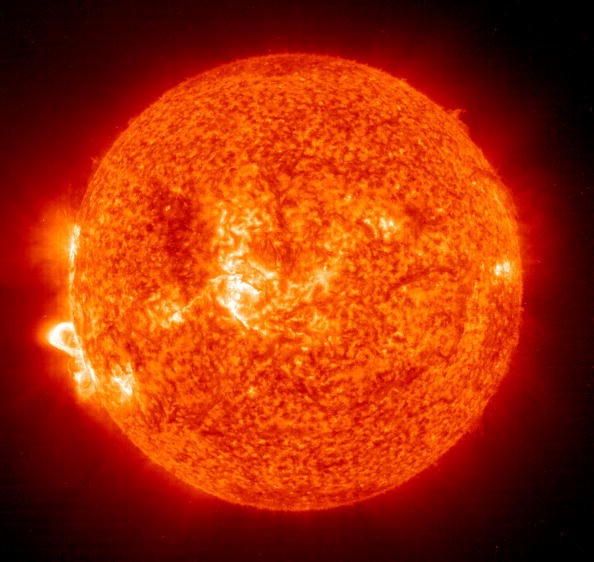There has been a lot of attention on a new study that revealed Earth was bombarded with high-energy particles (gamma rays) during an event that occurred some time in the past.
Radioactive chemicals in ice cores revealed that one of the most potent solar storms ever recorded impacted Earth around 7176 B.C.

Examination of Ice Cores
As a result of this event, the atmosphere was left with radioactive beryllium and chlorine isotopes, which came down during snowfall and were preserved in ancient ice layers.
This was almost certainly caused by a solar storm of charged particles called solar energetic particles (SEPs), but galactic gamma-ray bursts and supernovae would have left a similar chemical signature in the ice, as per Inside Science.
Solar storms have been linked to three SEP events that occurred in the years A.D. 993 or 994, A.D. 774 or 775, and in 660 B.C. in ice cores collected from both regions.
There was another large SEP event, which had never been documented before, and which occurred in the year 7176 BCE - or roughly 9,200 years ago.
It was determined that the solar storm of 7176 B.C. was so severe that if a similar one occurred today, it could have catastrophic consequences, including the destruction of satellites in orbit, the disruption of communications networks, and the blackout of electricity grids, based on the levels of radioactive isotopes of beryllium and chlorine.
Perplexing Feature of the Solar Storm
The fact that the 7176 B.C. solar storm occurred during a period of supposedly "quiet" solar activity (known as the "solar minimum"), when solar storms are unlikely, is puzzling to the researchers. They point out that existing risk evaluations fail to account for this potential.
There can be solar storms even during a period of low activity on the sun, according to Pesnell, project scientist at the Solar Dynamics Observatory (SDO).
According to Science Daily, the sun's tremendous magnetic fields entanglement and disentanglement causes the solar activity cycle. These events are more common at the peak of the cycle and less common at its lowest point.
Dartmouth College professor Mary Hudson, who studies solar storms, stated that if the storm occurred during a solar minimum, it may have been more severe than typical.
However, storms near a solar maximum may be less severe than usual, even though they are more prevalent.
When the "Carrington Event" in 1859 was first observed by astronomers, Hudson noted in an email that it occurred near the same time as the powerful solar storm of A.D. 774 or 75, which was also observed by astronomers but was not involved in the ice core study.

Impacts of Solar Storm
Solar storms haven't had a major impact on modern society yet. In addition to damaging satellites and posing a health risk to astronauts, these bursts of radiation can also interfere with radio signals used in communication networks and for navigation by ships and aircraft for several hours.
Additionally, they can disrupt power grids by causing unexpected electric currents to overwhelm the transformers in the grid.
For several hours in 2003, areas of Europe were plunged into darkness, while transformers in South Africa were blown out by a powerful solar storm in 1989, which also blacked out the Canadian province of Quebec.
As a result, power providers have "hardened" their equipment to better withstand damage from solar storms, according to Pesnell.
For more news, updates about solar storms and similar topics don't forget to follow Nature World News!
© 2025 NatureWorldNews.com All rights reserved. Do not reproduce without permission.





